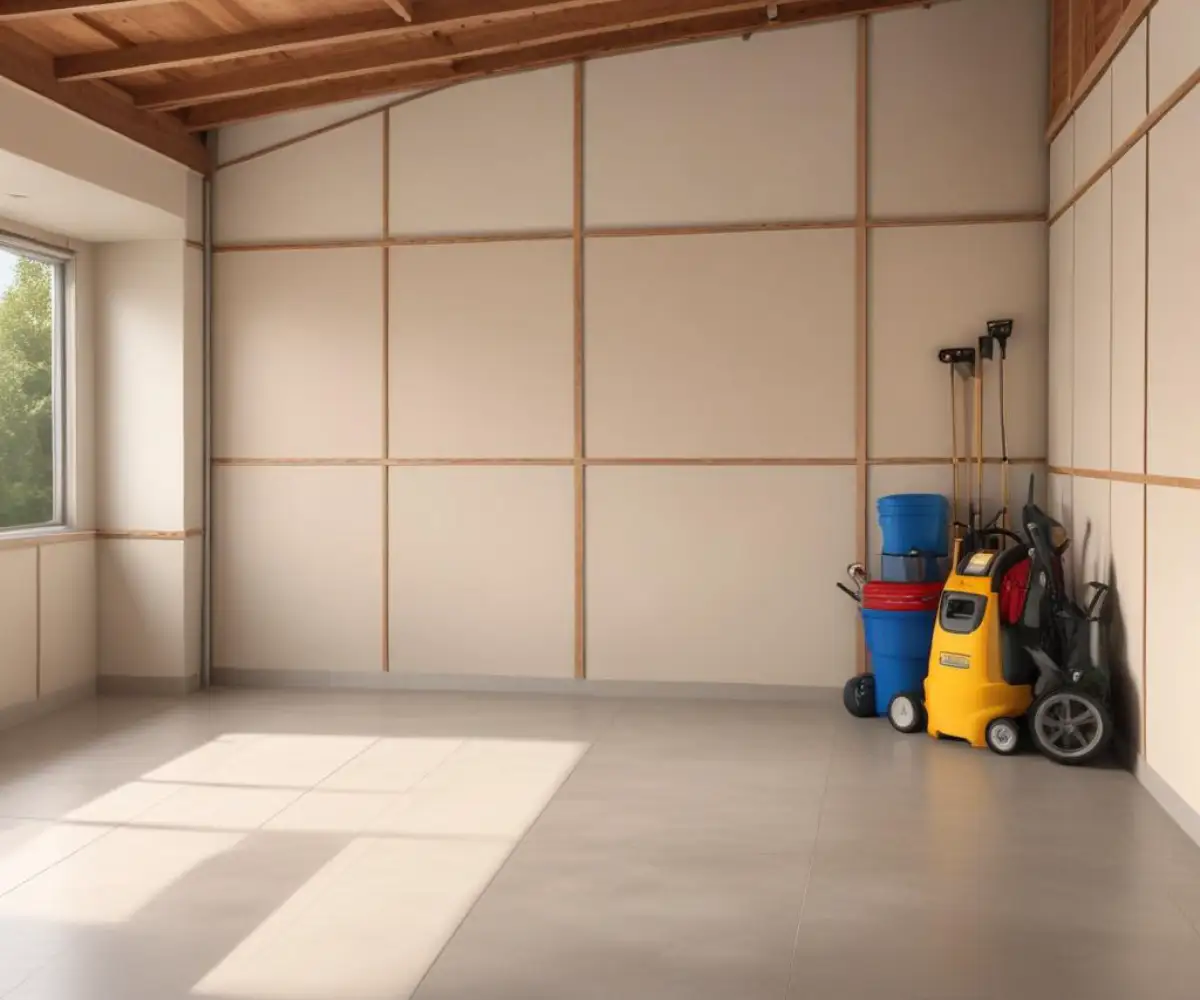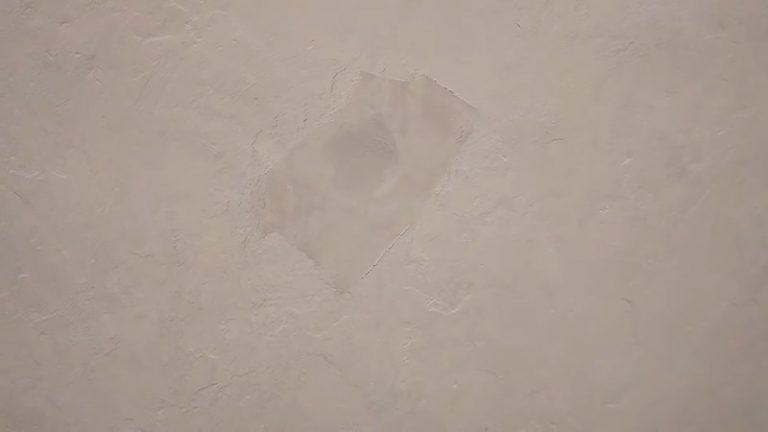What’s the Best Wall Covering for Unheated Rooms? Your Ultimate Guide
Finishing an unheated space like a garage, basement, or three-season porch presents a unique challenge. Standard materials often fail, leaving you with cracked, peeling, and moldy walls. The dream of a clean, usable space quickly turns into a frustrating and costly problem.
The core issue lies in relentless temperature swings and the moisture they generate. Without climate control, these spaces experience extreme cold, heat, and humidity, creating an environment where conventional wall coverings simply cannot survive. This guide breaks down why that happens and reveals the best materials built to withstand these harsh conditions.
You'll Learn About
Why Standard Wall Coverings Fail in the Cold
Understanding the science behind the failure of common materials is the first step toward choosing a durable solution. Unheated rooms are a battleground of condensation, freeze-thaw cycles, and poor air circulation, creating a trifecta of destruction for materials not designed for it.
The Constant Threat: Humidity and Condensation
When warm, moist air comes into contact with a cold surface—like your garage walls in the winter—the moisture in the air condenses into water droplets. This process is the primary enemy of materials like standard drywall, whose paper facing becomes a food source for mold and mildew. This persistent dampness leads to rot, decay, and an unhealthy environment.
The Freeze-Thaw Cycle’s Brutal Impact
Any moisture that seeps into porous materials like drywall or untreated wood becomes a destructive force when temperatures drop below freezing. Water expands when it turns to ice, causing the material to crack, blister, and delaminate. Over time, this repeated cycle of freezing and thawing breaks down the structural integrity of the wall covering, leading to widespread failure.
Stagnant Air: A Breeding Ground for Problems
Unheated spaces typically lack the mechanical air circulation of a main house. This stagnant air traps moisture, preventing walls from ever fully drying out. This constant state of dampness accelerates the growth of mold and mildew, contributing to musty odors and poor air quality.
The Best Wall Coverings for Unheated Spaces: Top Solutions
To win the battle against temperature and moisture, you need to choose materials engineered for these specific challenges. The best options are non-porous, waterproof, and durable enough to handle physical impacts common in utility spaces.
Vinyl (PVC) Paneling: The Moisture-Proof Champion
Vinyl or PVC panels are a top-tier choice for unheated rooms. These panels are 100% waterproof, meaning they will never rot, grow mold, or degrade due to moisture. They are lightweight, easy to install with interlocking edges, and incredibly simple to clean, making them perfect for garages, workshops, and damp basements.
Their smooth, non-porous surface provides a clean, finished look that stands up to the toughest conditions. Many PVC panel systems are designed to be installed directly over studs or even existing walls, offering a quick and effective upgrade. For utility spaces, this is often the most practical and long-lasting solution.

Fiberglass Reinforced Plastic (FRP): The Hygienic Workhorse
Often seen in commercial kitchens and car washes, FRP panels are built for extreme durability and hygiene. Like vinyl, they are completely waterproof and resistant to mold, mildew, and chemicals. FRP is incredibly tough and can withstand significant impacts without denting or scratching, a major advantage in a workshop or garage.
While the aesthetic is more industrial, its performance is unmatched in demanding environments. Installation is straightforward with a specialized adhesive, creating a seamless and easy-to-sanitize surface that will last for decades.
Cement Board: The Indestructible Option
For a truly resilient and fire-resistant wall, cement board is an excellent choice. Made from cement and reinforcing fibers, it is completely impervious to water and cannot rot or grow mold. It’s most commonly used as a tile backer in showers, but its raw, industrial look can be sealed or painted for a minimalist finish in a garage or utility room.
Cement board is heavy and can be more challenging to cut and install, but its sheer durability makes it a “one-and-done” solution. It provides a robust surface that can handle anything you throw at it.
Plywood or OSB: The Functional, Budget-Friendly Pick
Plywood and Oriented Strand Board (OSB) are popular for their affordability and structural strength, allowing you to hang tools and shelves anywhere without searching for a stud. However, using these wood-based products in an unheated room comes with a critical requirement: they must be thoroughly sealed on all sides.
To prevent moisture absorption and warping, every surface—front, back, and all edges—must be primed and painted with a high-quality exterior-grade or marine paint. This step is non-negotiable for ensuring their longevity in a fluctuating environment.
Beyond the Surface: Insulation and Vapor Barriers
Simply covering the walls is only half the battle. To create a truly resilient and comfortable space, you must control moisture and temperature from within the wall cavity itself. This is where insulation and vapor barriers play a critical role.
Insulated Wall Panels: The All-in-One System
For superior performance, consider insulated wall panels. These systems combine rigid foam insulation with a durable interior surface (like PVC or steel) into a single component. This approach provides excellent thermal resistance, which dramatically reduces condensation by keeping the interior wall surface warmer.
While the upfront cost is higher, these panels offer an integrated solution that provides insulation, a vapor barrier, and a finished wall in one step, saving time and labor. They are a smart investment for anyone looking to create a more temperature-stable environment.
The Critical Role of a Vapor Barrier
A vapor barrier is a sheet of plastic installed on the “warm side” of the insulation—meaning, behind your interior wall covering. Its job is to stop warm, moist air from the room from penetrating the wall cavity and condensing on the cold exterior sheathing. In an unheated space, this prevents moisture from becoming trapped within the walls, where it can lead to rot and mold. Proper installation is key to its effectiveness.
| Wall Covering Material | Pros | Cons | Best For |
|---|---|---|---|
| Vinyl (PVC) Panels | Waterproof, mold-proof, easy to clean, simple installation. | Can be more expensive than basic options, may have a less traditional look. | Garages, basements, workshops, laundry rooms. |
| Fiberglass Reinforced Plastic (FRP) | Extremely durable, waterproof, impact and chemical resistant. | Industrial appearance, requires special adhesive for installation. | High-impact workshops, commercial-style garages. |
| Cement Board | Impervious to water, fire-resistant, highly durable. | Heavy, can be difficult to cut and install. | Utility areas, rooms requiring maximum fire resistance. |
| Plywood / OSB | Affordable, structurally strong for hanging items. | Requires meticulous sealing on all sides to resist moisture. Not waterproof. | Workshops and sheds where functionality is key. |
| Insulated Panels | Provides insulation and a finished wall in one step, reduces condensation. | Higher initial cost. | Any space where temperature stability and moisture control are priorities. |
Wall Coverings to AVOID in Unheated Rooms
Choosing the wrong material is a recipe for failure. Certain products are guaranteed to cause problems in spaces with high moisture and temperature swings, and they should be avoided at all costs.
Standard Drywall: A Mold Magnet
Regular drywall is the worst choice for an unheated room. The paper facing readily absorbs ambient moisture, providing the perfect food for mold and mildew. Once it gets wet, it loses its structural integrity, crumbling and turning to mush. Even “moisture-resistant” drywall (green board) is only designed for high-humidity areas like bathrooms, not for spaces subject to constant condensation and freeze-thaw cycles.
Wallpaper and Natural Fiber Coverings
Wallpaper relies on adhesive to stick to the wall, and this glue is highly susceptible to failure in damp, fluctuating conditions. The paper or fabric itself will absorb moisture, leading to peeling, bubbling, and mildew growth. These materials offer no durability and will quickly deteriorate.
Untreated Wood Paneling
While wood provides a warm aesthetic, untreated panels like beadboard or shiplap will suffer in an unheated space. Wood naturally expands and contracts with changes in humidity. Without being sealed on all sides before installation, boards will warp, cup, and rot when exposed to persistent moisture. Just as choosing the right underlayment is critical for a floor’s longevity, selecting a properly sealed material is crucial for walls.
Final Thoughts: Prioritize Moisture Resistance Above All Else
When selecting a wall covering for an unheated room, your primary focus must be on preventing moisture damage. Materials like PVC panels, FRP, and cement board offer the most robust and lasting protection because they are inherently waterproof.
By investing in a material that cannot be harmed by water, you create a durable, low-maintenance space that will remain clean and functional for years to come. Avoid the pitfalls of standard materials and choose a solution designed to win the war against the elements.

